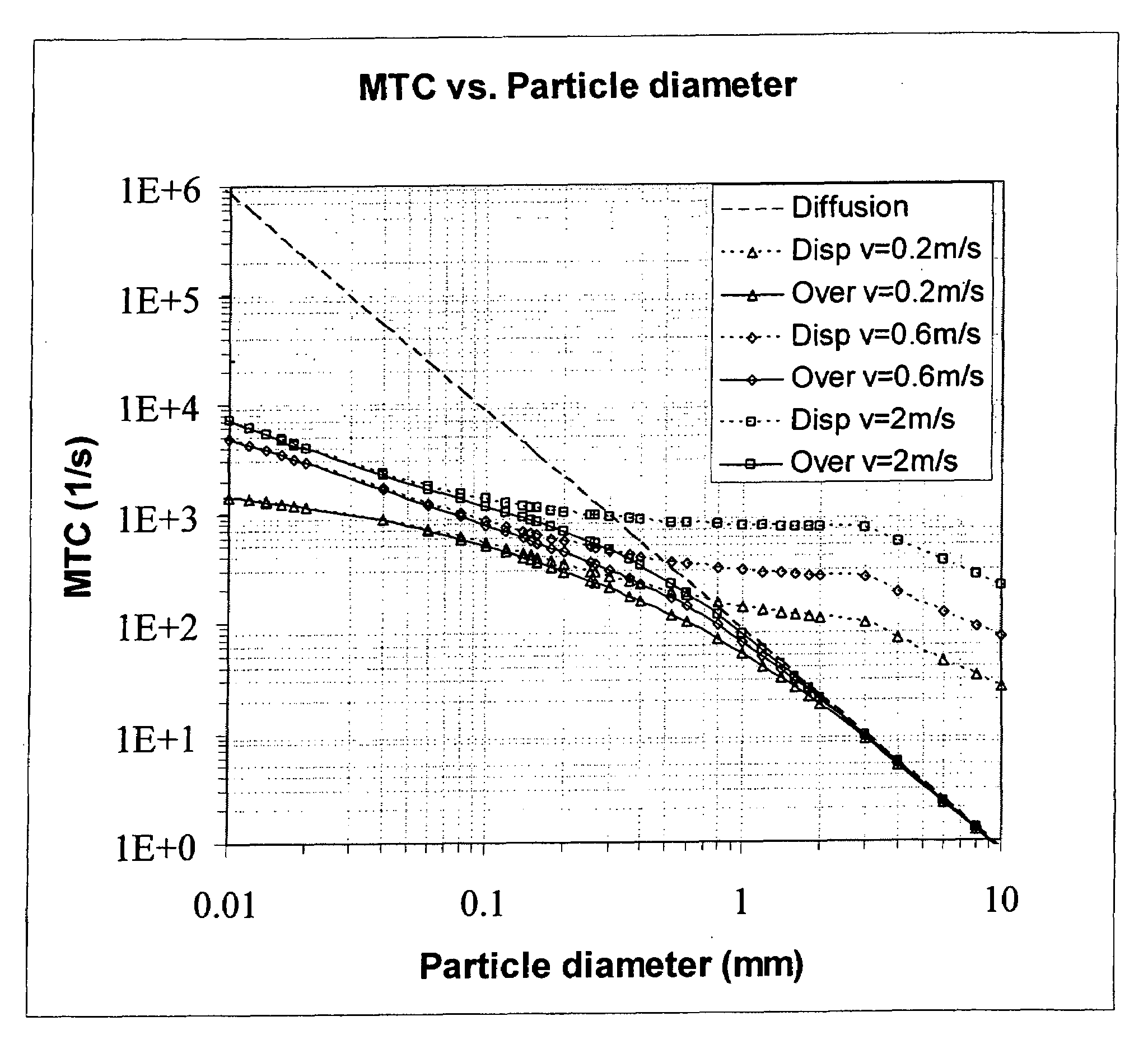High frequency PSA process for gas separation
a high-frequency, gas separation technology, applied in separation processes, dispersed particle separation, chemistry apparatus and processes, etc., can solve the problems of low product recovery, long (deep) beds, and relatively high power consumption of concentrators, so as to avoid the high pressure drop and long bed depth, low product recovery, and high power consumption
- Summary
- Abstract
- Description
- Claims
- Application Information
AI Technical Summary
Benefits of technology
Problems solved by technology
Method used
Image
Examples
example 1
[0051]An exemplary advanced air separation process may use an adsorbent such as LiX(2.0) with approximately 12% binder, treated with caustic digestion (cd) prior to Li exchange to convert the binder to zeolite. This adsorbent has a void fraction or porosity of εp=0.35, an average particle diameter of dp=2.0 mm, a N2 mass transfer coefficient of MTCN2=18 s−1 and a N2 effective pore diffusivity DpN2=5.5×10−6 m2s (hereinafter referred to as LiX(2.0)cd; see Sample S-2 in U.S. Pat. No. 6,500,234). PH=1.5 bara), air feed flow of 15 mol / m2s (or interstitial velocity of approximately 0.69 m / s). Process performance for this cycle includes: oxygen product purity of 90%, cycle time of 4 s, BSF=50 lb / TPDO and oxygen recovery=60%.
[0052]The processes of the present invention are developed and demonstrated in reference to the baseline process using the cycle steps described above. The bed length L and cycle time are varied simultaneously with the adsorbent particle diameter dp. The bed length L is...
example 2
[0053]The present invention is demonstrated by simulation of the baseline process using the process model described above and by varying the particle diameter, bed length and cycle time. The simulation results are summarized in FIGS. 3a and 3b. It is clear that as the particle size and cycle time decrease (or cycle frequency increases), process performance decreases. Oxygen recovery initially plateaus at larger particle sizes and then decreases with decreasing particle diameter (FIG. 3a). The bed size factor (BSF), given as pounds of adsorbent per ton of product oxygen produced per day (lb / TPDO), is inversely proportional to the productivity and decreases initially with particle diameter but then increases at smaller particle diameters as the reduction in oxygen recovery begins to overwhelm the benefits of shorter bed length (FIG. 3b).
[0054]Power is computed as the theoretical adiabatic power as described in the textbook by J. M. Coulson and J. F. Richardson (Coulson &Richardson's C...
example 3
[0057]To examine the influence of macropore diffusion within the particle on the preferred particle sizes, the effective solid phase diffusivity for nitrogen employed in the simulations (De) is increased from 5×10−7 to 6×10−6 m2 / s. The resultant recovery and BSF are compared in FIGS. 4a and 4b, respectively. The increased diffusivity (6×10−6 m2 / s) results in higher oxygen recovery and lower BSF for a given mean particle diameter. Thus, the increased adsorbent intrinsic diffusivity offsets or delays the increasing effects of axial dispersion as particle diameter decreases. This advantage translates to smaller systems (shorter beds) operating at high frequency.
[0058]The principles of this invention apply to any fixed bed separation or purification processes, particularly for bulk separations utilizing compact beds and high frequency cycles. While the invention is particularly well suited to air separation, it is equally applicable to other types of gas separations.
[0059]The system, al...
PUM
| Property | Measurement | Unit |
|---|---|---|
| cycle frequency | aaaaa | aaaaa |
| mean particle diameter | aaaaa | aaaaa |
| mean particle diameter | aaaaa | aaaaa |
Abstract
Description
Claims
Application Information
 Login to View More
Login to View More - R&D
- Intellectual Property
- Life Sciences
- Materials
- Tech Scout
- Unparalleled Data Quality
- Higher Quality Content
- 60% Fewer Hallucinations
Browse by: Latest US Patents, China's latest patents, Technical Efficacy Thesaurus, Application Domain, Technology Topic, Popular Technical Reports.
© 2025 PatSnap. All rights reserved.Legal|Privacy policy|Modern Slavery Act Transparency Statement|Sitemap|About US| Contact US: help@patsnap.com



